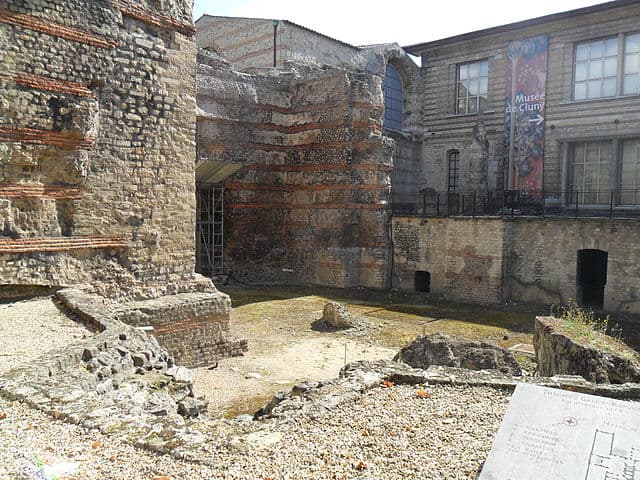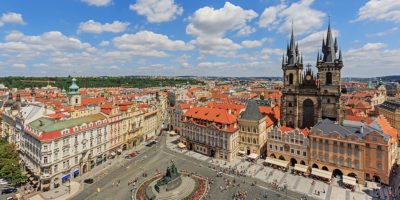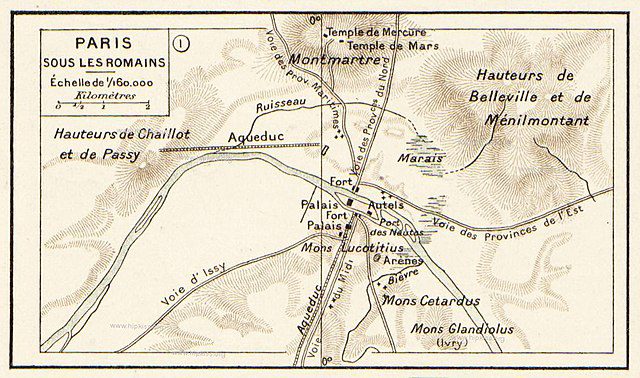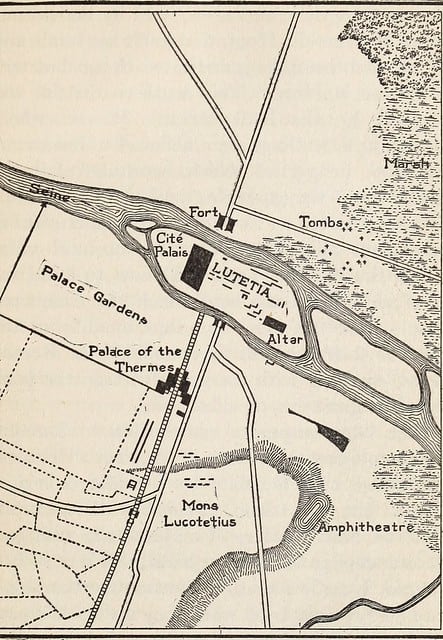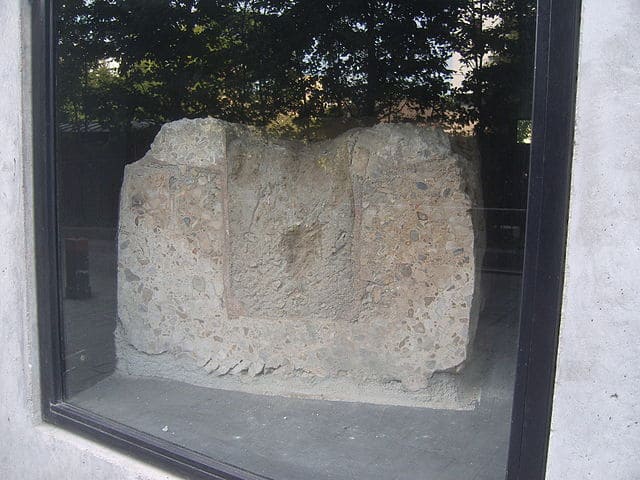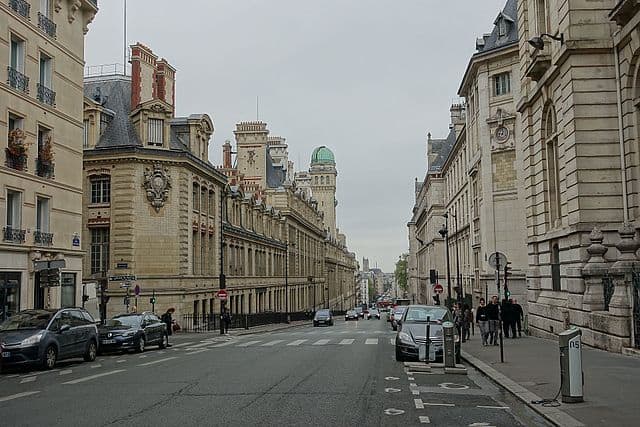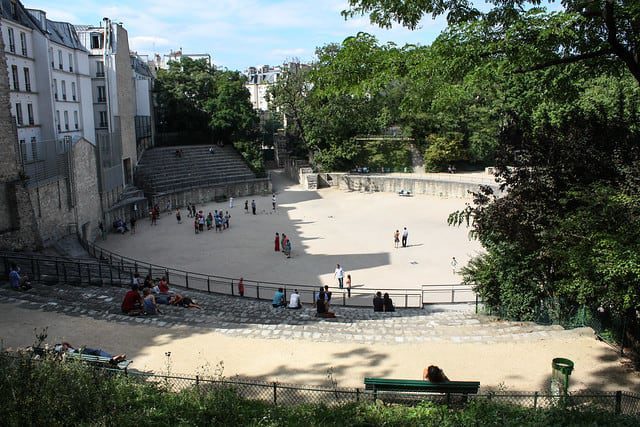Top 10 Interesting Facts about Paris during the Roman Empire
Paris has been around for quite a while, and the first group to truly set up roots were the Romans! These guys really got around, huh?!
Due to Paris’ proximity to the Seine River, it quickly became a hub of trade, and was in turn a valuable piece of land. No wonder the Romans wanted to settle here.
Today, you can still see traces of the Roman Empire in the city. Before you head out to explore on your own, here are the top 10 interesting facts about Paris during the Roman Empire!
1. A group of Celtics were the first to settle in Paris
Before I get down to the business of telling you more about Paris during the Roman Empire, I want to tell you a little bit about the area before the Romans showed up.
Way back in 8000 BC, a group of hunters and gatherers are assumed to have lived in Paris. In 2008, human bones were discovered in what is now the 15th arrondissement.
Fast forward to 250 BC, and you’ll find a group of Celtics living in what is now Paris. They called their city Parisii. The community built forts for protection, created and produced their own coins, and began trading with other settlements across Europe.
2. The Romans conquered Paris in 52 BC
The Romans conquered the city of Parisii in 52 BC. With all of that awesome trading along the river that the Celtics were doing, it’s not hard to see why!
Their tribe was led by the Celtic warrior Vercingetorix. His armies fought the good fight against the Romans in what would be called the Battle of Lutetia.
The Romans were a powerful force to be reckoned with, so it should come as no surprise that they were able to seize Parisii. They decided to call the new settlement Lutetia.
3. They called Paris Lutetia
The origin of the name Lutetia is unknown, but what is certain is that that is the name Julius Caesar gave to Parisii after it was conquered by his armies.
There are theories that state that it comes from the root of the Celtic root luto-, which means “marsh,” or “swamp.” This would make sense as the center of Paris, especially Le Marais (which means swamp in French!), was very, erm, mushy and swampy back in the day.
4. Roman Paris was not very big
The Paris that we know today is one of the world’s major cities, with 2.1 inhabitants, but in the Roman Empire, the population was between 8,000 and 10,000. Lutetia was not a very important Roman settlement for this reason!
Imagine, Paris not important?! I KNOW!
5. The Romans built the first road in Paris
The Roman city planners were most likely the first to lay the first two parallel roads in Paris, called cardos. One was laid to go north towards the Seine, and another that connected the center island, the Île-de-la-Cité, to the main land.
These cardos were constructed with the marshy land in mind, and were created to make things like trade easier. Other streets were then built that jut off from the original cardos, which led to the baths, theatre, and other houses and palaces that were in Lutetia!
6. The Romans also installed baths and an amphitheatre
Something that was typical of all Roman settlements was the baths! The Romans were one of the first civilizations to understand the importance of cleanliness, and created baths to meet the needs of their citizens. Roman baths were also places of socialization and relaxation. Rendez-vous at the baths for a bit of gossip, anyone?!
The baths in Lutetia weren’t just any old baths, they were thermal baths! Which meant that even in the winter time, Lutetians were able to bathe without worrying about freezing cold weather.
The Romans also built an amphitheatre, which at the time, was located outside the settlement. Ladies and gentlemen, I present the Arènes de Lutèce! It was the center of activity for the Lutetians, a place where they could go for entertainment and to socialize with one another. It was one of the biggest amphitheatres in the area, and could house up to 15,000 people.
You can still visit the remains of the baths and the amphitheatre, but more on that later.
7. The Romans built aqueducts too!
The Roman Empire was impressive for many things, but in particular, their use of aqueducts was really something that they were known for. The aqueducts in Lutetia provided the city with fresh spring water, which was safe for drinking and cooking, and could be used to grow their crops.
The aqueduct in Lutetia was 26 kilometres long, with a flow rate of 2000 cubic meters per day, give or take. The water was collected from various places along the aqueduct.
8. Roman Paris was a major boating center
I already mentioned that Lutetia did a lot of trading with other European settlements. This was all made possible due to its proximity to the Seine River!
The Romans were so proud of their new trading post in Lutetia, that they erected a pillar dedicated to the seamen and tradesmen in the settlement. It was called the pilier des nautes (the pilar of the boatsmen) and was built by a group of sailors and merchants. It was dedicated to the Roman emperor Tiberius.
Today, you can see a model of the pilar in the Cluny Museum. Again, more on that museum later!
9. The Romans martyred Paris’ first bishop
You may have heard of Paris’ first bishop, Saint Denis. The reason that Saint Denis is so famous, is that apparently, after he was martyred by the Romans in 250 AD by decapitation, he walked to streets of Paris with his head in his hands.
The Romans were famous for their hatred of Christianity, so it should come as no surprise that they wanted to martyr Saint Denis. He was supposedly martyred on the hill that would become Montmartre, which is where the name of the Parisian neighborhood comes from. Mont means mountain in French, and martre is a play on the word martyr.
La Crypte du Martyrium de Saint Denis is located in Montmartre, and you can check it out today if you’re in Paris!
10. You can still see traces of Roman Paris today!
There are quite a few places in Paris that you can go to see traces of the ancient Roman settlement of Lutetia.
The Cluny Museum is filled with artefacts, and there are also remnants of the thermal baths inside! The baths were covered with rubble for years, but were rediscovered in the 12th or 13th century. They have been preserved since then, and now make up a portion of the museum. You can also see the remains of the “cold baths,” or, the frigidarium.
Cluny Museum – National Museum of the Middle Ages
Adress: 28 Rue du Sommerard, 75005 Paris
Open: Every day except Monday 9:15am-5:45pm
The rue Saint-Jaques is the oldest road in Paris, and is located in the same place as that one road leading north to Seine that I mentioned in the beginning of this article. It was built to connect France to Spain, and led up to the hill where the amphitheatre was located. If you stand at the top of the rue Saint-Jacques today, you will notice that the road slopes down towards the river.
The Arènes de Lutèce, or the amphitheatre to the Lutetians, was rediscover in 1860. The city of Paris originally wanted to destroy it to make way for new construction, but the theatre was saved by none other than French author Victor Hugo!
Arènes de Lutèce
Address: 49 Rue Monge, 75005 Paris
Open: Every day, 8am or 9am-6pm, 7:30pm, or 8:30pm, depending on the season. The amphitheatre is open earlier and closes earlier in the warmer months.
Paris Tourism Office website with details
The Roman wall that was built to protect Lutetia from invaders still remains in sections in Paris. You can check it out for yourselves over on the rue de la Colombe in the 4th arrondissement. It’s located on the Île-de-la-Cité, and you will be able to see traces of the wall on the street. There is also a small plaque located at 5 rue de la Colombe commemorating the wall.
Rue de la Colombe, 75004 Paris
Conclusion
I hope you all have enjoyed this brief history lesson on Paris during the Roman Empire!
So, what ever happened to those pesky Romans?! Well, after the fall of the Roman Empire in the 3rd century, the city was Christianised, and Clovis I, King of the Franks made Paris his capital in 508. And, now you know where the name France comes from!
That’s it for me, but if you’d like to learn even more about Paris and its beginning, I definitely recommend signing up for one of our Paris walking tours. We have a bunch to choose from, click here to learn more!
Planning a trip to Paris ? Get ready !
These are Amazon’s best-selling travel products that you may need for coming to Paris.
Bookstore
- The best travel book : Rick Steves – Paris 2023 – Learn more here
- Fodor’s Paris 2024 – Learn more here
Travel Gear
- Venture Pal Lightweight Backpack – Learn more here
- Samsonite Winfield 2 28″ Luggage – Learn more here
- Swig Savvy’s Stainless Steel Insulated Water Bottle – Learn more here
Check Amazon’s best-seller list for the most popular travel accessories. We sometimes read this list just to find out what new travel products people are buying.

